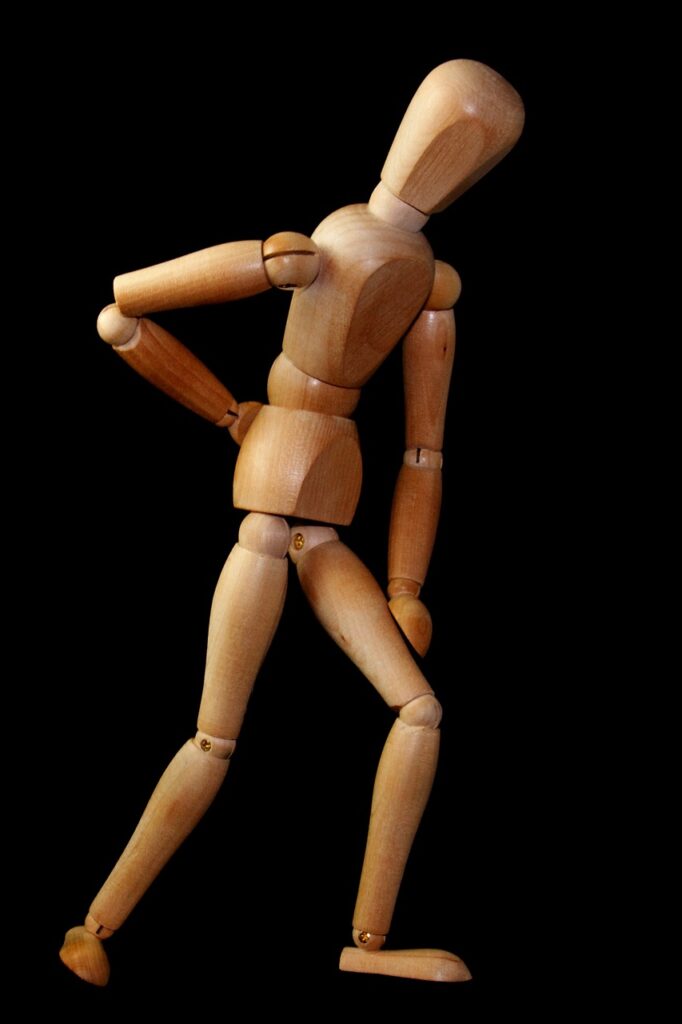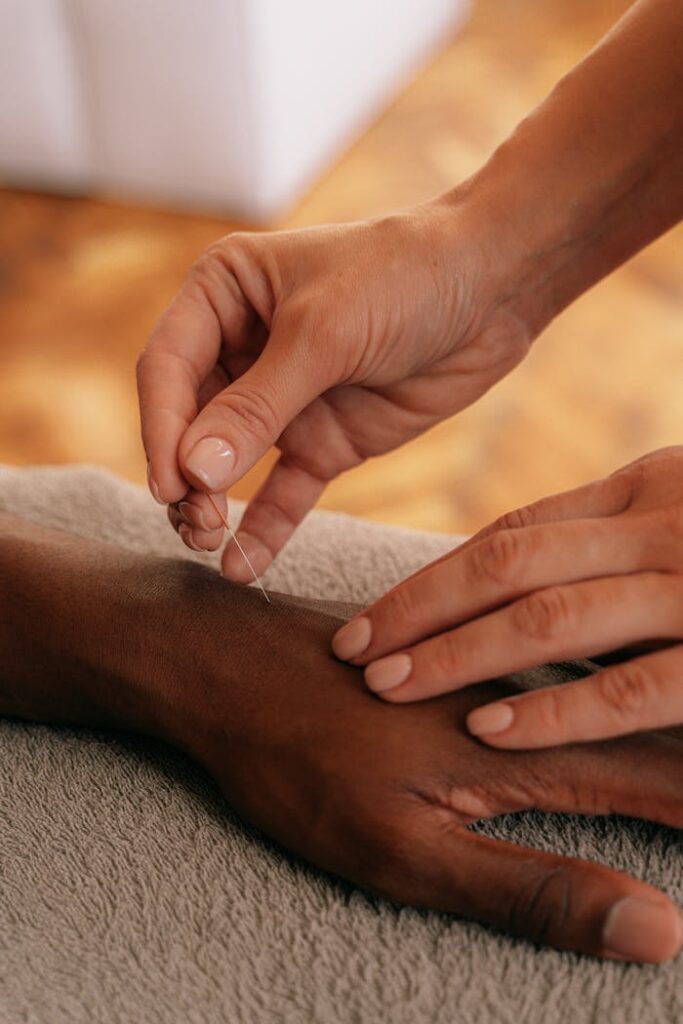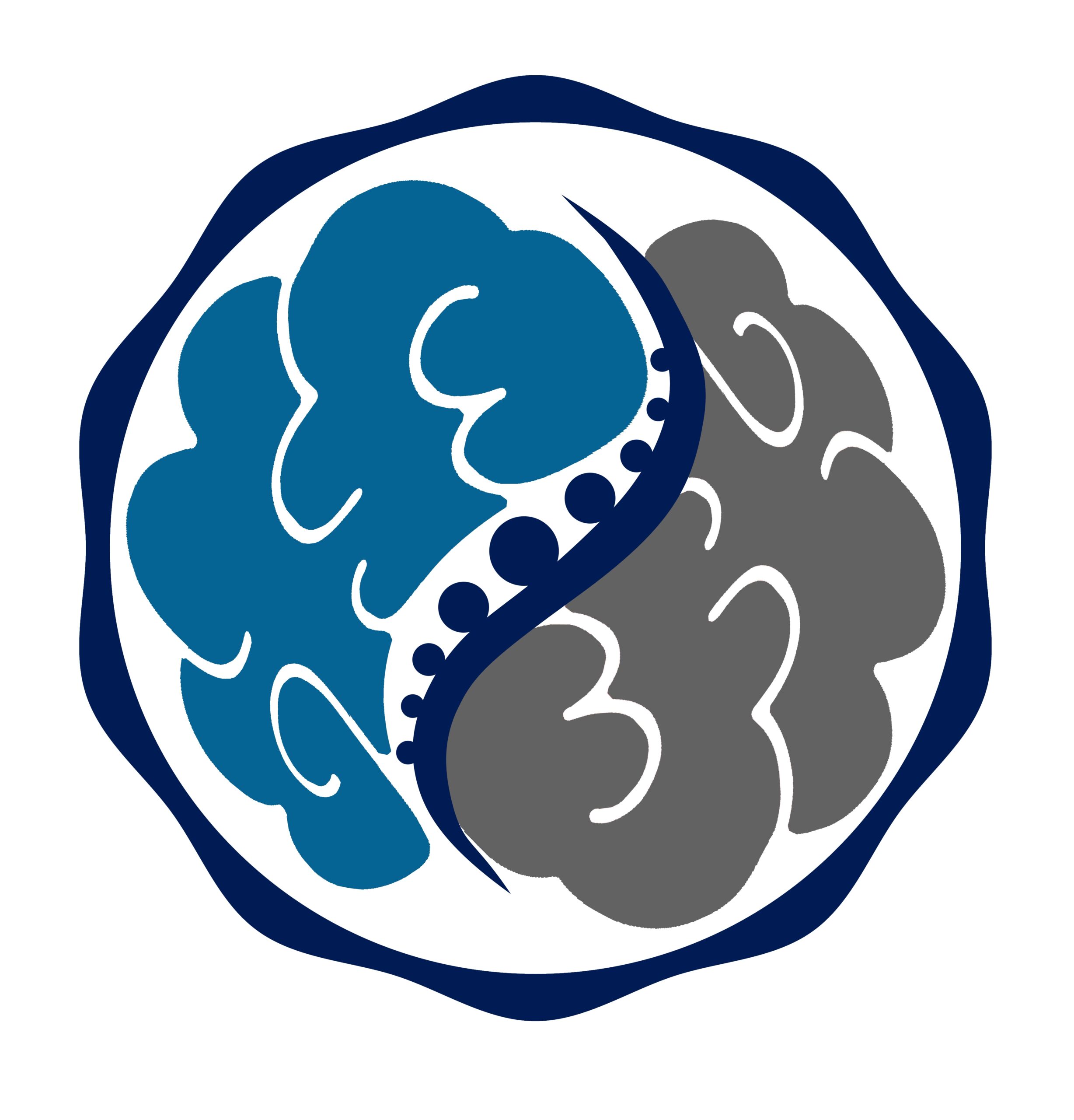How Can Acupuncture Naturally Help Relieve Your Sciatic Pain Without Surgery?
Acupuncture and Sciatica:
What is sciatica and what are its symptoms?
- The sciatic nerve emerges from the L4 to S3 segments of the lower back and the sacral part of the spinal cord, and it travels all the way from the top of the leg to the foot.
- Disc herniation with compression to the lumbosacral nerve root and resultant inflammation is able to interpret 85% of the occurrence for sciatica. Other causes include degenerative disc disease, lumbar spinal stenosis, spondylolisthesis, piriformis syndrome and similar structural conditions.
- Various systematic reviews and meta-analyses demonstrate that acupuncture is significantly effective in reducing the pain. Acupuncture has also shown to be safe, especially when compared to analgesic treatment for sciatica.
Keep reading about how how acupuncture can help with your sciatic pain.
Sciatica versus Low Back Pain – what are the differences?
Back pain very common medical problem in the United States. The quality of pain can often be described as a dull, persistent backache or sometimes as sudden and sharp. In every case, the pain is local, only felt in the middle of the lower back, and does not radiate down the buttocks, hip or the leg.
Onset can be very fast, especially if related to a fall, lifting or carrying something heavy, or after suffering an accident. In many cases it also forms from degenerative structural changes in the lower spine or sometimes from inflammatory arthritis.
If the pain however is felt on the hips, the buttocks, or down the leg along the path of the sciatic nerve, then it indicates a pinched nerve, and then is called a sciatic pain.
Depending on how long the pain lasts, the low back pain or sciatic pain can be described as:
- Acute – When it appears unexpectedly and lasts merely a few days up to one month
- Subacute – When the pain can develop either sudden or progressively, and lasts 1-3 months
- Chronic – When the pain develops either fast or slow, it is felt every day, and it lasts longer than 3 months

Vital Statistics
|
Sciatica Risk Factors

Sciatica develops when a herniated (or bulging) disk in your spine presses on your sciatic nerve.
The chart to the left shows the pathway of the pain down the leg, depending on the location of the disc herniation.
Level of fitness: Endurance athletes and strength athletes often develop sciatica from overwork, overtraining and cumulative trauma disorders.
However, sciatica is more common among people who are not physically active, because their abdominal and low back muscles cannot sufficiently support the spine. Pain is also more likely to occur if you decide to over-train, after being inactive for some time.
Job-related risk factors. Jobs that require you to lift, or pull or push heavy objects, can injure the back. Repetitive jobs, such as operating certain types of machinery can cause repetitive strain injuries, repetitive motion disorders, overuse syndrome and work-related musculoskeletal disorders, sometimes accompanied lack of sufficient recovery time.
On the other hand, office jobs that require you to sit in a chair for long times, may also be equally detrimental to spinal health.
Age-related degeneration may also affect spinal health, leading to sciatic pain, particularly in those over the age of 45.
Other reasons for sciatica include: A sedentary lifestyle, obesity, stress and bad sleeping patterns, bad postural habits, bad sitting habits, tumors, abscesses or blood clots, nerve disorders, diabetes etc.
In some cases, genetics may play some role.
In some cases, no obvious identification for the cause of sciatica can be made.
How Will Acupuncture Benefit You?

When you arrive at the office for your first visit, the doctor will assess your symptoms through a series of orthopedic examinations. He will also ask for your basic medical history and several relevant questions related to your work, lifestyle and exercise. By the end of this interview, he will more or less have an understand for the potential origin of your sciatica.
For the treatment, the doctor will usually ask you to lie face down on the treatment table, and insert several acupuncture needles at strategically chosen points, to induce and promote healing.
The treatment session usually lasts 40-60 mins, depending on your individual situation, your progress and severity of the condition.
Sometimes you may feel the needles, other times the needling sensation maybe very mild.
A typical acupuncture session may last from 30 to 60 minutes depending on the individual case. One course of treatments is approximately 7 -10 sessions.
For simple cases, sometimes one course is enough. For more complicated, severe and chronic cases, several rounds will be necessary.
Can Acupuncture Relieve Sciatica in a Natural Way?
1. Orthopedic acupuncture was originally developed in China over 2000 years ago on the basis of empirical body mechanics, which are now confirmed by modern anatomical principles.
2. Evidence based research and meta-analysis confirm its role in the treatment of sciatica.
3. Acupuncture is easily accessible and relatively low cost, especially when compared to other mainstream solutions.
4. Very few temporary side-effects.
5. The effect of acupuncture is cumulative, leading to long lasting pain control.
6. The effects of acupuncture are dual: a) it allows the small muscles around the affected vertebrae to relax, and b) it helps to reduce the inflammation at the point where the bulging disc is pressing on the nerve. |
Acupuncture has been an established analgesic modality for treating pain for over 2000 years. It has been a very popular medical practice in Japan, Malaysia, Taiwan, South Korea, China, Singapore, Vietnam and various other Asian countries.
According to several 2 systematic reviews3 and meta-analyses 4 , acupuncture is a very effective, and safe alternative to common analgesics and can be considered as a suitable replacement for the standard painkiller-based treatment.
The effects of acupuncture are cumulative, and they can lead to long lasting pain control, and offering a potentially decreasing pain recurrence rate.
However, the effects of acupuncture extend beyond pain and they can often benefit your sleep patterns, your energy levels, cognitive abilities, digestion, stress and anxiety and general health being.
Acupuncture in the United States is legally practiced only by Licensed Acupuncturists.
Dr. Solos has practiced Orthopedic acupuncture in Chinese hospitals since 2006. He moved to Arizona in 2019 where he currently maintains his clinical acupuncture practice.
Risks and Precautions
- Acupuncture may cause slight bleeding or bruising around the area of needle insertion.
- It may cause drowsiness or lightheadedness during or immediately after treatment.
- Sometimes after acupuncture, there may be a lingering discomfort for a few days, or a flare up of your condition. This “healing crisis” is a normal part of the recovery process and it shows that the body is responding to the acupuncture effect. The initial discomfort eventually fades away as the healing process advances.
- Acupuncture is a healing process and will not immediately cancel out a lifetime of health neglect within a very short time. You will need to discuss and work together with your provider, towards step by step attaining your health goals.
- Acupuncture is not always covered by insurance. Check with your provider about prices or package deals.
Before contacting an acupuncturist make sure that they are licensed and in good standing.
Most licensed acupuncturists have completed a minimum of 3-4 years training at a graduate school, have passed National Board Exams administered by NCCAOM 5 and attained a State Board License, before they are allowed to practice.
Dr. Solos highest degree is a PhD in Chinese and Western Integrative Medicine. He belongs to an exclusive group of merely a handful of western practitioners to have had their full medical and clinical education in China.

FAQ

When should you see a doctor?
If the pain does not improve after several weeks, and it is accompanied by, numbness or “pins and needles” sensation, or if the painkillers have no effect, or if you start having difficult urination, or weakness/numbness in the legs, or some unexplained weight loss or you start developing a fever. In all of these cases you should speak to a doctor.
What is the fastest way to regain living independence and perform normal daily tasks after chronic sciatica and low back pain?
If the pain does not improve after several weeks, and it is accompanied by, numbness or “pins and needles” sensation, or if the painkillers have no effect, or if you start having difficult urination, or weakness/numbness in the legs, or some unexplained weight loss or you start developing a fever. In all of these cases you should speak to a doctor.
Bottom line
There is much systematic and meta-analysis research data that supports the positive effects of acupuncture in the treatment of sciatic pain.
Always speak with your doctor about your options before including acupuncture to your treatment plan.
The effects of acupuncture in the treatment of orthopedic and musculoskeletal complaints are cumulative. This means that the longer you receive treatments, the better for your general spinal health.
The effects of acupuncture can be accentuated if coupled with life changes that include moderate exercise, stretching, yoga, Qi Gong, and similar soft exercises
Sometimes things get worse before they get better, especially after suffering from a chronic condition.
Understand that there are no quick fixes or miraculous cures that can be performed once or twice that will allow you to return to your previous life immediately and cancel out years of spinal and low back neglect.
1 https://www.cdc.gov/nchs/data/nhsr/nhsr098.pdf
2 https://pubmed.ncbi.nlm.nih.gov/35985442/
3 https://pubmed.ncbi.nlm.nih.gov/36845439/
4 https://pubmed.ncbi.nlm.nih.gov/26425130/
5 https://www.nccaom.org
